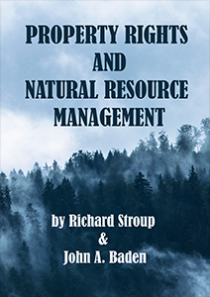Property Rights and Natural Resource Management
Synopsis
Harold Demsetz’s "Toward a Theory of Property Rights,†American Economic Review (May 1967, reprinted in Eirik G. Furobotn and Svetozar Pejovich, eds., The Economics of Property Rights, 1974) is a major contribution to the economists’ approach to property rights. In his essay, Demsetz drew on important historical and anthropological information to illuminate the development of property rights among native Americans. What is important here is a talented economist’s sensitive use of this historical material. Demsetz applies the research of scholars concerned with seventeenth-century, eastern-Canadian Indian societies to describe the Indians’ recognition of property rights in the animals hunted for the fur trade. Drawing on some of the same historical sources which John Locke had earlier used in the seventeenth century to formulate his own understanding of property rights— French Missionary reports on Indian societies, such as the Jesuit Relations—historians have been able to describe the nature of property rights among the different tribes of native Americans. Demsetz summarized the significance of property rights concepts for the fur hunting tribes:
Forest animals confine their territories to relatively small areas, so that the cost of internalizing the effects of husbanding these animals is considerably reduced. This reduced cost, together with the higher commercial value of fur-bearing animals, made it productive to establish private hunting lands. Frank G. Speck finds that family proprietorship among the Indians of the Peninsula included retaliation against trespass. Animal resources were husbanded. Sometimes conservation practices were carried on extensively. Family hunting territories were divided into quarters. Each year the family hunted in a different quarter in rotation, leaving a tract in the center as a sort of bank, not to be hunted over unless forced to do so by a shortage in the regular tract.


